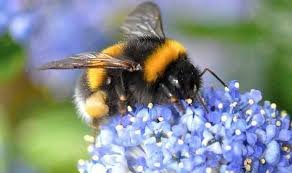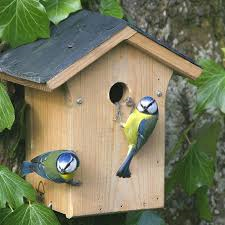In his introduction, Steve mentioned that his background was in garden design and soft landscaping but his main claim to fame was that he once went to Sri Lanka with Anika Rice. Nowadays, he splits his time between organising nature tours, offering professional gardening services and giving talks and lectures.
Wildlife gardening is currently very much in vogue and Steve proceeded to provide some pointers as to how we could all increase the biodiversity of our garden without compromising the way it looks.
 Choosing flowers which provide pollen and nectar encourages bees, butterflies and other insects whilst small trees and shrubs known for their flowers, fruit and seeds not only provide a wealth of food at varied times of the year, but also offer cover and nesting sites for birds and mammals. Adding a water feature of some kind will entice a range of amphibians, and a small log pile offers a habitat suited to a variety of more specialist minibeasts. Recreating a small meadow area with a mixture of grasses and wild flowers is a natural alternative to a labour-intensive lawn or, simply allowing patches of lawn to grow longer provides additional shelter and food for smaller mammals and birds.
Choosing flowers which provide pollen and nectar encourages bees, butterflies and other insects whilst small trees and shrubs known for their flowers, fruit and seeds not only provide a wealth of food at varied times of the year, but also offer cover and nesting sites for birds and mammals. Adding a water feature of some kind will entice a range of amphibians, and a small log pile offers a habitat suited to a variety of more specialist minibeasts. Recreating a small meadow area with a mixture of grasses and wild flowers is a natural alternative to a labour-intensive lawn or, simply allowing patches of lawn to grow longer provides additional shelter and food for smaller mammals and birds.
 Putting up bird boxes, bat boxes and making hedgehog homes is yet another great way of offering shelter to our wildlife as the more habitats you have in your garden, the greater the diversity of wildlife it will attract. The wildlife friendly gardener needs to also put in place good wildlife garden practices and should try to use natural alternatives to sprays and pesticides whenever possible.
Putting up bird boxes, bat boxes and making hedgehog homes is yet another great way of offering shelter to our wildlife as the more habitats you have in your garden, the greater the diversity of wildlife it will attract. The wildlife friendly gardener needs to also put in place good wildlife garden practices and should try to use natural alternatives to sprays and pesticides whenever possible.
Steve’s talk was most informative and, by following his tips and making just a few small changes to the way we manage our garden, we can make it much more ‘user friendly’ to all the creatures that call it home. The simplest way to do this is just to let nature take its course and leave things to go a teeny bit wild; this doesn’t mean your garden has to be messy, but a few weeds, dead leaves and twiggy debris will provide a variety of food and microhabitats for our wildlife all year round.

Leave a Reply
You must be logged in to post a comment.